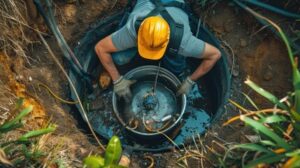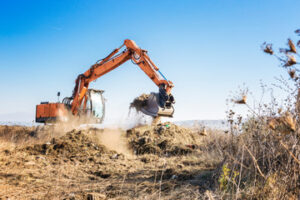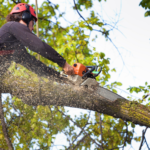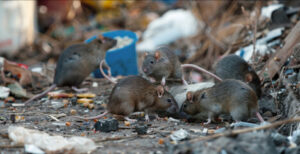There are so many options when it comes to Kitchen Cabinet Hardware Phoenix. But, choosing a design that balances style with size and function can be a challenge.
For example, a knob or pull that is too big can look out of place and a handle that is too small will not be comfortable to use. Fortunately, there are some tips that can help you narrow down your choices and make the right choice for your space.
Knobs

Whether you prefer a simple grip or a design element that adds visual interest to your kitchen, cabinet knobs offer a versatile option. Smaller than pulls and requiring only one screw to install, they’re a good choice for lightweight doors. Cabinet knobs come in a variety of shapes, materials and finishes to suit any aesthetic. If you prefer a more traditional or classic look, consider knobs in round or square shapes that match your kitchen’s overall color palette. For a more modern or minimalist look, try a knob with a curved or angular design.
Knobs can also be found in a wide range of designs, including novelty shapes like mushrooms or globes that add a bit of whimsy to your space. In addition to color and design, the type of material you choose for your cabinet knobs will impact functionality. For example, ceramic or glass knobs can withstand heavy use, while metal options are rust-resistant and durable.
The most important factor in selecting the right kind of cabinet hardware is personal preference and your design theme. For example, if your kitchen has a rustic farmhouse feel, knobs can bring in a warm character and pair well with washed earthy finishes. They’re also less expensive than pulls and easy to install, making them a great option for smaller or budget-friendly cabinets.
Pulls offer a more contemporary look, making them an excellent choice for drawers that store heavier items like pots and pans. Unlike knobs, which are typically shorter and have a single point of contact with the door or drawer, pull handles are longer and connect at two or more points, allowing you to easily open larger drawers.
In order to properly position pulls on tall cabinets, it’s best to place them at a comfortable height that’s easy to reach. Usually, this means positioning them 2-3 inches from the top or bottom edge of the cabinet, and ideally near the vertical stile. This helps ensure that the hardware is easy to grasp and doesn’t catch on clothing or other items nearby. If you opt for pulls on taller cabinets, make sure they’re placed consistently to provide an integrated look.
Pulls
The right cabinet pulls can make your kitchen more functional, allowing you to access drawers and cabinets with ease. With a variety of styles, materials and finishes, you can find the perfect cabinet hardware to complement your home’s aesthetic. From sleek and modern to rustic and traditional, there’s a cabinet pull that’s the right fit for any kitchen.
Whether you’re aiming for a clean, minimalist look or a more contemporary design aesthetic, matte black is one of the most popular cabinet hardware trends in 2025. The timeless, elegant finish creates a bold contrast against light cabinetry and other neutral tones while adding depth to dark cabinetry.
Knobs and pulls are mounted vertically on door and drawer fronts to align with the edge of the frame, making them easy to use, especially for upper cabinets that can be difficult to reach without a ladder or chair. Generally, you should mount the knobs and pulls 2-3 inches from the bottom corner of the door or drawer frame for optimal accessibility.
Cabinet hardware is often seen as a small detail with a big impact, adding the finishing touch to a room’s overall design. Choosing a unique material or a finish that stands out is an excellent way to personalize your kitchen and create a space that’s truly your own.
Aside from the visual appeal of different cabinet hardware options, it’s also important to consider how easy they are to use and maintain. For example, a kitchen with large drawers requires hardware that’s more substantial than smaller ones. For this reason, you may want to choose oversized cabinet pulls or knobs with an eye-catching design for maximum functionality and style.
As homeowners strive to improve the resale value of their homes, attention to detail is becoming more and more important. Installing stylish and well-chosen cabinet hardware is a simple, cost-effective way to add character and charm to your home. Adding the perfect cabinet hardware can transform your kitchen and increase its resale value, making it a smart investment in your home’s future.
Cups
Often paired with knobs, cup pulls are a timeless and classic alternative to handle hardware. A simple backplate creates a sleek profile that is easy to grasp and complements many styles of kitchens, from modern to traditional. In addition, they offer an easy way to introduce a new color or finish into the room without committing to a full cabinet hardware overhaul.
While not as popular as they once were, knobs can still provide a classic and sophisticated touch to your Kitchen’s décor. Whether used on cabinet doors or drawers, they can add a finishing touch that brings together all of the details in your space and completes your kitchen design.
Although they may look similar, there is a difference between the type of knobs and pulls that are best for your space. Traditionally, knobs are best for doors and pulls are more suitable for drawers. Depending on your design, you can mix and match both types of handles to ensure that the entire room is cohesive in its aesthetic and function.
Another thing to keep in mind when choosing your cabinet hardware is the size and scale of the rest of your room. A large kitchen with numerous cabinets can easily be overwhelmed with too much of one style or color of hardware. In this case, it may be a good idea to opt for a more neutral finish and then add in pops of color with the use of accessories like backsplashes, window treatments, and table linens.
For a refined and elegant look, chrome hardware is a standout choice that shines and reflects light. However, this finish can easily show fingerprints and scratches, so it’s a good idea to opt for satin or brushed options instead. Quality chrome cabinet hardware also has a sturdy metal core that resists corrosion.
To make your Kitchen’s knobs and pulls even more unique, consider adding texture to your choice. Textured finishes like hammered, knurled, and reeded can elevate your hardware to an exquisite statement piece that feels like it’s been worn over time. In addition, textured hardware can be a great way to bring your kitchen’s overall décor into alignment with your chosen style theme.
Locks
Cabinet doors, drawers and storage units serve important functional purposes in a kitchen. They also provide an opportunity to create visual interest with cabinet hardware. Whether your cabinets are a classic style or a more modern design, they need functional, durable hardware to keep them looking great and functioning properly. Cabinet knobs and pulls are an easy and cost effective way to add a pop of color or a decorative statement to your cabinetry. But don’t overlook the importance of other cabinet hardware like cabinet-mounting wood screws and latches or locks.
Locks and latches are often overlooked, but they play a crucial role in keeping your kitchen safe. The right cabinet lock keeps household chemicals, medicines and other potentially harmful products away from kids or pets, making your home a safer place to live. You can also find smart cabinet locks that connect to your smartphone and allow you to see activity feeds and grant access to trusted guests from anywhere.
If you plan on using your cabinets as a food storage area, you should consider installing a magnetic or adhesive cabinet door lock. These help secure a cabinet door with or without a knob and can be used to prevent toddlers from opening and closing cabinets. They can also help keep breakable items and sharp objects out of reach.
Lastly, a door hinge plate can be a decorative element or a structural component. You can find them in a wide variety of styles and finishes. For example, a bright or reflective chrome finish can make your cabinets shine and stand out against a dark countertop. On the other hand, oil-rubbed bronze or antique brass can complement warm-toned countertops and cabinets for a cozy feel in a room.
The small details of your home are what make it a unique space. Choosing the right cabinet hardware can be a fun and rewarding project that gives your kitchen, bathroom or laundry room a fresh new look. Seeing and touching hardware in person helps you understand its size, shape and feel. At our local showroom, you can get hands-on experience with a variety of cabinet hardware options and see how they look in different lighting conditions to find the perfect fit for your home.








